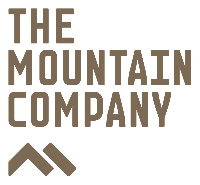In April we organised our 14th group trek around Dhaulagiri Circuit. Our leaders were Ade Summers (UK & Australia) and Chandra Rai (Nepal) and the Sherpa guides supporting the group were Mhin and Bhim. We had six people in this group and like in previous years this group was an international mix with people coming from Switzerland, USA and UK.
The group arrived to Kathmandu on April 16th and we organised the group briefing for late afternoon. We made one change with our Dhaulagiri Circuit itinerary compared to previous years as we have extended by one day so the trip is now 21 days from arrival to Kathmandu. In previous years on Day 2 we flew from Kathmandu to Pokhara, drove to Beni and then trekked to first night's camp at Babuchur. This was too long especially if there were any delays in flying to Pokhara and quite often the group would arrive to Babuchur after dark therefore we now include one night in Pokhara before starting the trek. The feedback from the leaders and the group has been positive with this change in itinerary so we will keep this in place for our future Dhaulagiri Circuit groups.
The trek went well and the group arrived to Italian Base Camp as planned on April 24th. On April 30th the group crossed French Col into Hidden Valley. However the weather throughout the trek was quite rainy and there was deep snow higher up making the days crossing French and Dhampus passes more challenging for the group and crew. The weather this Spring throughout Nepal has been unsettled with more precipitation than in previous years. On May 2nd the group crossed Dhampus Pass with superb views of Annapurna South and Nilgiris and made good progress to camp at Alu Bari for the night.
Throughout this expedition we received weather forecasts from Michael Fagin at everestweather.com and we sent these onto Ade by text to his satellite phone. Having professional weather forecasts is essential for safety in crossing high passes and for decision making in the field.
We have carefully designed our Dhaulagiri Circuit for acclimatisation and our groups have two nights at Italian Base Camp at 3,660m followed by two nights at Glacier Camp at 4,200m then a further two nights at Dhaulagiri Base Camp at 4,700m. Only with this ascent profile will you have enough time for your body to adapt to the high altitude for safe crossing of the high passes and for sleeping in Hidden Valley at 5,050m.
As with all of TMC camping treks we track their progress while in the field through SPOT gps check ins, you can see the map of this trek in SPOT Adventure website
Congratulations to the group for completing Dhaulagiri Circuit. I would like thank Ade and Chandra plus the rest of the team for their help and hard work.
The feedback from the group has been very positive and everyone had a good time. I have copied several member’s feedback from AITO.com website below:
"I had an excellent experience with The Mountain Company---Top Notch" Melvin
As with all of TMC camping treks we track their progress while in the field through SPOT gps check ins, you can see the map of this trek in SPOT Adventure website
Congratulations to the group for completing Dhaulagiri Circuit. I would like thank Ade and Chandra plus the rest of the team for their help and hard work.
The feedback from the group has been very positive and everyone had a good time. I have copied several member’s feedback from AITO.com website below:
"I had an excellent experience with The Mountain Company---Top Notch" Melvin
"The Mountain Company organised everything to a tee. We never had to worry about anything as everything was taken care of giving us the time and space to enjoy Nepal." Mat
"The whole trip was well planned,organised and executed by The Mountain Company. The Mountain Company works to very high standards and achieves them, whilst being sensitive to the fragile environment in which it operates and respectful of the local peoples. From the off, the level of communication and personal advice offered is detailed, considered and personally tailored. Very impressive personal service. It is pleasing that customer feedback is listened to, then, where appropriate, put into action to enhance the next treks experiences. Well done and I hope to trek with you again in the near future." Paula
The Mountain Company organises Dhaulagiri Circuit trek and Dhampus Peak expedition twice a year in April and October. Our Dhaulagiri Circuit group in October 2017 is now guaranteed to run so please get in touch soon if you like to join this group.
"The whole trip was well planned,organised and executed by The Mountain Company. The Mountain Company works to very high standards and achieves them, whilst being sensitive to the fragile environment in which it operates and respectful of the local peoples. From the off, the level of communication and personal advice offered is detailed, considered and personally tailored. Very impressive personal service. It is pleasing that customer feedback is listened to, then, where appropriate, put into action to enhance the next treks experiences. Well done and I hope to trek with you again in the near future." Paula
The Mountain Company organises Dhaulagiri Circuit trek and Dhampus Peak expedition twice a year in April and October. Our Dhaulagiri Circuit group in October 2017 is now guaranteed to run so please get in touch soon if you like to join this group.
Trek on!
Roland Hunter
www.themountaincompany.co.uk


























